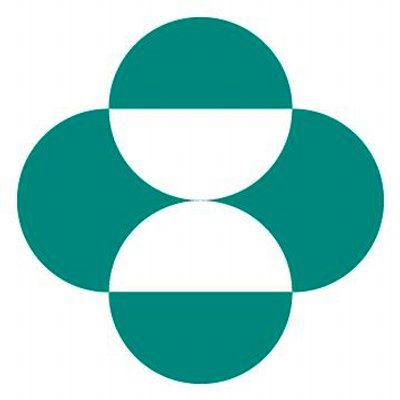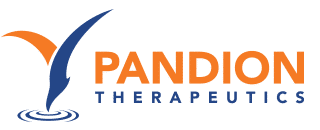预约演示
更新于:2025-10-30
PT101
更新于:2025-10-30
概要
基本信息
最高研发阶段临床1期 |
首次获批日期- |
最高研发阶段(中国)终止 |
特殊审评- |
登录后查看时间轴
结构/序列
Sequence Code 319498947

关联
12
项与 PT101 相关的临床试验CTR20240947
一项在系统性红斑狼疮成人受试者中评价MK-6194有效性和安全性的IIa期、多中心、随机、双盲、安慰剂对照研究。
评价MK-6194治疗中度至重度活动性系统性红斑狼疮 (SLE) 成人患者与安慰剂相比的有效性以及评价MK-6194的安全性和耐受性。
开始日期2024-05-30 |
申办/合作机构  默沙东研发(中国)有限公司 默沙东研发(中国)有限公司 [+3] |
CTR20241087
一项在中国健康受试者中评估MK-6194安全性、耐受性和药代动力学的随机、双盲、安慰剂对照单次给药研究
主要目的:在中国健康受试者中评价MK-6194单次皮下注射给药后的安全性和耐受性。
次要目的:1. 在中国健康受试者中评价MK-6194单次皮下注射给药后的血清PK特征
2.在中国健康受试者中评价MK-6194单次皮下注射给药后的免疫原性
开始日期2024-04-23 |
申办/合作机构  默沙东研发(中国)有限公司 默沙东研发(中国)有限公司 [+3] |
NCT06821334
A Randomized, Double-Blind, Placebo-Controlled Single Dose Study to Investigate the Safety, Tolerability, Pharmacokinetics of MK-6194 in Healthy Chinese Participants
The goal of this study is to learn how safe MK-6194 is in healthy Chinese adults and how well people tolerate it.
开始日期2024-04-23 |
申办/合作机构 |
100 项与 PT101 相关的临床结果
登录后查看更多信息
100 项与 PT101 相关的转化医学
登录后查看更多信息
100 项与 PT101 相关的专利(医药)
登录后查看更多信息
1
项与 PT101 相关的文献(医药)2025-03-26·ImmunoHorizons
Safety, pharmacokinetics, and pharmacodynamics of MK-6194, an IL-2 mutein designed to selectively activate regulatory T cells: single ascending dose and multiple ascending dose trial data
Article
作者: Beaumont, Maribel ; Sicard, Eric ; Van Dyck, Kristien ; Decaesteker, Tatjana ; Scheid, Johannes F ; Higginson-Scott, Nathan ; Nieddu, Garrett ; Paul, Erina ; Sutradhar, Santosh ; Pang, Ling ; Shah, Ketal ; Rottey, Sylvie ; Agarwal, Shiuli ; Mendez, Luis ; Cote, Josee ; Otipoby, Kevin L ; Franco-Dilone, Lucia ; Laethem, Tine ; Wnek, Richard ; Contreras, Alejandra Virginia ; Bueters, Tjerk ; Kim, Nancy ; Viney, Joanne L ; Lemoine, Lieselotte ; Stoch, S Aubrey ; Larson, Patrick ; Sundy, John S ; Kis-Toth, Katalin ; Love-Gregory, Latisha ; Cunningham-Bussel, Kiki ; Baltus, Gretchen A ; Iwamoto, Marian ; Zhao, Xuemei ; Robbins, Jonathan A ; Lai, Eseng
Abstract:
MK-6194, an interleukin-2 mutein designed to selectively activate regulatory T cells (Tregs), was evaluated for safety, pharmacokinetics (PK), immunogenicity, and pharmacodynamics in healthy participants. In a single ascending dose trial (N = 56), participants received subcutaneous MK-6194 or placebo (3:1 ratio) across dose levels ranging from 1 to 10 mg. In a multiple ascending dose trial (N = 54), participants received subcutaneous MK-6194 or placebo (3:1 ratio) at dose levels ranging from 0.5 to 5 mg every 2 wk (total 3 doses) as well as 5 mg every 4 wk (total 2 doses). Baseline characteristics were comparable between trials, with participants mostly male with a mean age of 36 yr. There were no serious adverse events or dose-limiting toxicities. The most common adverse events were injection site erythema and eosinophil count elevations (with no indication of severe eosinophilia or eosinophilia-related organ damage). PK showed dose-proportionality and repeated doses of MK-6194 did not result in accumulation or time-dependent PK. Immunogenicity was low with no impact on PK or safety. Treg expansion as assessed by flow cytometry and Treg-specific demethylation region analysis was observed in a dose-dependent manner during both trials and expanded within about 8 d postdose up to about 5-fold and returned to baseline by 14 to 29 d postdose. Minimal impact was observed on other lymphocytes including total T lymphocyte and natural killer cell counts. These findings support the further development of MK-6194 as a potential treatment for autoimmune disorders.
32
项与 PT101 相关的新闻(医药)2025-10-30
点击蓝字
关注我们
本
期
看
点
2025年10月28日,和铂医药2025全球研发日活动现场,公司创始人王劲松博士描绘了一幅雄心勃勃的蓝图:未来三年,和铂将在疾病领域、技术平台、产品矩阵及收入结构四个维度全面升级。再次看见了 CTLA-4 单抗的身影。
当默沙东果断砍掉引自康方的CTLA-4抑制剂肺癌项目时,和铂医药却为其差异化的HBM4003制定了全面的临床开发计划。这种“逆流而上”的底气,源于其全球稀缺的全人源抗体平台。
更小的结构、更精准的靶向、更低的毒性——全球首个进入临床阶段的全人源重链抗体能否重新定义CTLA-4抑制剂的未来?
本文将全面梳理CTLA-4抑制剂当前所处的临界转折点,帮助读者洞察这个免疫检查点“老靶点”的新未来。
本期内容
01
和铂医药丨 CTLA-4 抑制剂
02
国外CTLA-4抑制剂进展
03
国内CTLA-4抑制剂进展
04
总结与展望
【01 和铂医药丨 CTLA-4 抑制剂】
和铂医药通过其特有的Harbour Mice®平台,开发出新一代抗CTLA-4抗体Porustobart(HBM4003),一种全人源重链抗体(HCAb),。
结构的突破
Porustobart的独特之处源于其分子设计的根本性革新。与传统抗体不同,Porustobart采用全人源重链抗体结构,仅由两条重链构成,完全缺失轻链。由此,Porustobart成为全球首个进入临床阶段的全人源重链抗体。
分子量仅为传统IgG抗体一半(约75kDa)的Porustobart,具有优异的肿瘤组织穿透性。动物模型显示,给药后正常组织1小时即出现信号峰值,而肿瘤组织信号峰值则在24小时才出现,表明其能高效富集于肿瘤部位。
此外,Porustobart对CTLA-4靶点具有高亲和力,可达10-11M,为其高效发挥作用奠定了基础。
作用机制突破
Porustobart通过双重机制刺激抗肿瘤免疫反应。
一方面,它像传统CTLA-4抑制剂一样,阻断CTLA-4与B7分子的相互作用,解除对T细胞的抑制信号。另一方面,Porustobart通过增强的抗体依赖细胞毒性作用(ADCC),高效且选择性地清除肿瘤微环境中高表达CTLA-4的调节性T细胞(Treg细胞)。
实验数据显示,Porustobart在1nMol浓度下对体外分化的Treg细胞最大清除率可达60%,其半数最大效应浓度(EC50)约为市场上传统CTLA-4抗体的100倍。更值得关注的是,Porustobart具有差异化的药代动力学特征。其在体内系统暴露量较低,能较快从血液中被清除,但能在肿瘤部位有效富集。这一特性可能转化为更宽的治疗窗口,有望在提高疗效的同时降低系统毒性。
临床数据验证
Porustobart已在多项临床研究中展现出令人鼓舞的抗肿瘤活性和可接受的安全性。
肝细胞癌(HCC):2025年发表在《Clinical Cancer Research》上的I期研究显示,Porustobart联合特瑞普利单抗作为晚期肝细胞癌二线治疗,在未接受过PD-1/PD-L1抑制剂治疗的患者(队列1)中,客观缓解率(ORR)达到40.0%,疾病控制率(DCR)为73.3%,中位无进展生存期(PFS)为5.7个月。
而在既往PD-1/PD-L1治疗失败的患者(队列2)中,疗效相对有限,提示该联合方案可能更适合PD-1/PD-L1初治患者。
神经内分泌肿瘤:2023年AACR大会上公布的Ib期研究结果显示,Porustobart联合特瑞普利单抗在这类难治性肿瘤中同样展现出良好的抗肿瘤活性,总体ORR达到38.9%,神经内分泌癌患者的ORR和DCR分别为38.5%和69.2%。
安全性方面,大多数治疗相关不良事件(TRAEs)为1-2级,3级TRAEs发生率在肝细胞癌研究中为39.3%(11/28),未报告4级或5级TRAEs,表明其安全性可控。
早期的初步结果,虽然有一定的潜力。但目前来看,全球针对 CTLA-4 靶点的研发,已然处于红海状态。且机制和结构都有差异性,究竟哪一种结构和机制才是正确的呢?
02 国外CTLA-4抑制剂进展
在肿瘤微环境中,免疫检查点的相互作用会导致免疫抑制,进而促进肿瘤进展(见下图左侧)。相反,给予免疫检查点抑制剂后,可逆转免疫逃逸机制,增强抗肿瘤免疫反应,并诱导肿瘤细胞凋亡(见下图右侧)。
免疫检查点、免疫细胞与恶性肿瘤细胞之间复杂相互作用的示意图
Sharma S, Singh N, Turk AA, et al. [PMID: 38659481 DOI: 10.3748/wjg.v30.i13.1815]
CTLA-4抑制剂是免疫检查点抑制剂(ICI)的一类代表药物,主要通过解除CTLA-4介导的T细胞抑制,增强机体抗肿瘤免疫反应。
施贵宝丨O+Y
其中,百时美施贵宝(BMS)自主研发的伊匹木单抗(Yervoy)是全球首个获批的CTLA-4抑制剂,用于黑色素瘤、肾癌等适应症。
国内具体获批适应症和研究汇总如下:
阿斯利康丨D+T
阿斯利康的曲美木单抗(Tremelimumab,Imjudo)近年来也相继获批用于肝癌和非小细胞肺癌(NSCLC)等适应症。
随着PD-1/PD-L1抑制剂时代的到来,CTLA-4抑制剂主要以联用方式发挥作用(如伊匹木单抗+纳武利尤单抗),总体市场份额相对较小。据预测,全球CTLA-4抑制剂市场在未来数年仍将保持快速增长(2025–2029年新增规模约35亿美元,年复合增长率19.1%)。
默沙东丨 MK-1308 丨 CTLA-4 抑制剂
2025年7月29日,默沙东发布财报宣布,为落实“到2027年每年节省30亿美元开支”计划,决定终止多项研发项目,其中包括:从康方生物引进的CTLA-4抗体MK-1308在NSCLC中的开发以及19亿美元从Pandion Therapeutics收购的IL-2突变蛋白MK-6194(PT001)项目。
MK-1308(又名quavonlimab)最初于2015年由默沙东从康方生物引进,默沙东曾为此支付2亿美元,期望与帕博利珠单抗(Keytruda)联用拓展适应症。但最新完成的II期临床(245例NSCLC患者)主要终点未达预期,导致默沙东终止了MK-1308在NSCLC适应症的开发。值得注意的是,默沙东并未彻底放弃MK-1308,全力推进其在肾细胞癌(RCC)的III期试验,这表明其决策是基于具体数据的精准调整,而非全盘否定CTLA-4项目价值。
MK-6194(PT001)则是默沙东2021年以19亿美元收购Pandion Therapeutics获取的自身免疫病领域IL-2突变蛋白药物。该药通过选择性激活调节性T细胞,治疗系统性红斑狼疮、白癜风等自身免疫疾病。但来自SLE和白癜风II期研究等的主要中期结果显示未见临床获益,默沙东因此决定放弃MK-6194。默沙东发言人指出,此决定基于对MK-6194关键试验结果的全面审查,缺乏明显临床疗效,因此将其从产品管线中剔除。
整体来看,默沙东此轮项目清理是其“多管齐下”战略的一部分:一方面削减对成长乏力产品的依赖(Keytruda增长放缓、Gardasil需求骤减),另一方面聚焦潜力管线投资。公司高层表示,裁撤项目节省的资源将全数再投入重点新药的上市与商业化。
由此可见,目前针对于 CTLA-4 抑制剂的研发,还是难以取得非常肯定的结果,总难达到安全性和疗效的双重提升。且在不同瘤种之中,数据差异巨大。
【03 国内CTLA-4抑制剂进展】
本土创新药企也在加速布局CTLA-4领域。
信达生物丨IBI310
信达生物的IBI310(伊匹木单抗)是我国首个自主研发的CTLA-4单抗,目前已在中国提交上市申请,具体信息整理如下。
2025年2月22日,信达生物的信迪利单抗+伊匹木单抗双免联合治疗方案的上市申请获得国家药品监督管理局(NMPA)受理。
此前,该联合疗法已于2025年2月5日被中国国家药监局药品审评中心(CDE)拟纳入优先审评,适应症为用于可切除的微卫星高度不稳定型(MSI-H)或错配修复缺陷型(dMMR)结肠癌患者的新辅助治疗。
研究数据
在2024年美国临床肿瘤学会(ASCO)年会上,信达生物公布了该联合疗法用于结肠癌新辅助治疗的1b期随机对照研究的临床数据。
研究结果显示:
• 共有101名患者被随机分配接受联合治疗或单药治疗,其中联合治疗组的病理完全缓解率(pCR)显著高于单药治疗组(80.0% vs 47.7%)。
• 在安全性方面,联合治疗组与单药治疗组因药物相关不良事件导致手术延误的发生率分别为3.8%和0%;3级及以上的免疫相关不良事件发生率分别为5.8%和8.2%,联合用药并未显著增加额外的安全风险,且对后续手术操作无不良影响。
此外,信达生物指出,当前部分IIB至III期结肠癌患者手术难度较大,传统新辅助化疗的pCR率仅约5%,而该联合疗法有望降低术前分期,缩小手术范围,提高完全切除率,减少术后辅助化疗需求,从而改善长期预后。
04 总结与展望
综上所述,默沙东针对CTLA-4抑制剂领域的调整体现了其对管线价值和成本效益的重新评估。一方面,MK-1308在NSCLC中II期试验未达预期,说明即便联用PD-1,其疗效提升也难以显著;加之NSCLC领域已有成熟竞品,默沙东选择“止损”并将资源倾斜到更有希望的适应症(RCC)和新管线。另一方面,这也反映出在肿瘤免疫领域,企业正越来越重视临床数据驱动和商业回报的平衡。在保证Keytruda持续领跑的同时,默沙东必须为未来增长储备新引擎,故积极布局慢阻肺、代谢性疾病等领域,并快速剥离业绩拖累或发展乏力的项目。
从全球角度看,CTLA-4抑制剂市场竞争格局趋于明朗:美国大药企在创新药物和国际布局上占据先机,中国药企则通过自主创新加速切入(例如IBI310、QL1706),并通过国际化合作不断扩大影响力。未来,CTLA-4抑制剂或将更多以组合疗法出现(如与PD-1、IL-2等联合),其市场前景仍看好。和铂医药凭借技术平台的差异化和临床进展的稳步推进,正在走出一条与众不同的道路。HBM4003能否最终成功,将取决于其临床数据能否真正兑现“高效低毒”的承诺。但对比PD-1单抗,其独立地位和市场份额受限。综上,应持续关注临床数据的导向性和各企业战略投入的变化,从而把握CTLA-4抑制剂领域的最新动态与竞争格局。
★
抗体药物偶联物临床结果临床1期细胞疗法临床申请
2025-08-10
·精准药物
随着全球药企陆续披露2025年Q2财报,各企业H1营收情况浮出水面。
H1营收排名依次是:强生、罗氏、默沙东、艾伯维、辉瑞、礼来、阿斯利康、诺华、拜耳、BMS。
总体来讲,强生以456.36亿美元营收依然领跑MNC,礼来凭借大爆减重产品替尔泊肽实现业绩增长41%,飞跃入榜居第6位。TOP10外还有诺和诺德、赛诺菲、GSK紧随其后。整体来看,2025年上半年MNC的业绩表现基本勾勒出当下制药企业发展的激烈竞争与多元图景。
1
强生
7月16日,强生公布2025年上半年业绩,上半年营收456.36亿美元,同比增长4.1%。创新药和医疗技术板块收入分别达290.75亿美元(+3.6%)和165.61亿美元(+5.0%)。
创新药板块中,肿瘤业务表现亮眼,上半年销售额119.9亿美元,同比增长21.1%,主要依赖 Darzalex(达雷妥尤单抗)、Carvykti(西达基奥仑赛)等产品。Darzalex上半年销售额67.76亿美元(+21.7%),Carvykti销售额达8.08亿美元,增长迅猛。免疫学领域,Tremfya销售成绩21.42亿美元(+25%)依旧亮眼,抵消了一部分Stelara销售额下滑的冲击。神经学领域,Spravato(艾司氯胺酮鼻喷雾剂)上半年销售额7.34亿美元(+48.1%),表现出色。
双抗药物多点发力,Tecvayli (特立妥单抗)上半年销售额3.17亿美元(+18.2%),Talvey(塔奎妥单抗)达1.92亿美元(+52%),Rybrevant(埃万妥单抗)与 Lazcluze(拉泽替尼)共同实现3.2亿美元销售额。
交易方面,强生年初146亿美元收购的Intra-Cellular Therapies旗下 Caplyta,上半年销售额 2.11 亿美元,未来商业潜力较大。展望下半年,创新药业务有望延续增长,全年预计销售额中点上调至934亿美元,多个产品适应症拓展和研发值得期待,长期增长动力充足。
2
罗氏
7月24日,罗氏公布2025年上半年业绩,总营收309.44亿瑞士法郎(约389.52 亿美元),同比增长7%。制药业务营收239.85亿瑞士法郎(+10%,约 301.92 亿美元),中国区收入17.02亿瑞士法郎(+9%,约21.42亿美元)。共有9款药物销售额超10亿瑞士法郎,其中TOP5为:Ocrevus、Hemlibra、Vabysmo、Tecentriq、Perjeta。核心治疗领域的收入分为肿瘤(78.27亿瑞士法郎,+2%),血液(43.2亿瑞士法郎,+19%)、神经学(48.72亿瑞士法郎,+10%)、免疫(33.21亿瑞士法郎,+14%)和眼科(21.48亿瑞士法郎,+17%)几大领域,除肿瘤外均保持双位数增长。
ADC药物表现亮眼,Polivy(维泊妥珠单抗)销售额7.3亿瑞士法郎(约9.19亿美元,+46%)临床进展有所突破;Kadcyla(恩美曲妥珠单抗)销售额10.37亿瑞士法郎(约13.05亿美元,+9%),早期乳腺癌辅助治疗贡献增长。
双抗药物方面,Columvi销售额1.23亿瑞士法郎(约1.52亿美元,+88%),新适应症获批;Lunsumio销售额4800万瑞士法郎(约5900万美元,+33%),皮下制剂有望年底在美获批。血友病双抗NXT007临床效果瞩目,计划2026年启动 III 期试验。
3
默沙东
7月29日,默沙东公布2025年上半年业绩,总营收313.38亿美元,同比下降2%;制药业务276.88亿美元,同比下降3%。其中,核心产品 Keytruda(帕博利珠单抗)销售额79.56亿美元,同比增长7%;Lynparza(奥拉帕利)和Lenvima(仑伐替尼)分别为默沙东带来了6.82亿美元和5.23亿美元的收入。但Gardasil(HPV疫苗)系列销售额24.53亿美元,同比大跌48%,主要原因在于中国地区需求下降及国际市场竞争压力。
管线方面,与第一季度相比,默沙东终止多个II期和III期临床管线,包括MK-1308(CTLA-4单抗)针对非小细胞肺癌的II期研究、MK-6194(IL-2融合蛋白)针对红斑狼疮和白癜风的II期研究、MK-1022(HER3-ADC)针对非小细胞肺癌的III期研究,以及MK-7902(仑伐替尼)针对食管癌的III期研究。
全年展望方面,2025年全球销售额预期收窄至 643-653 亿美元。此外,默沙东还宣布启动一项新的多年期优化计划,希望通过生产力行动预计每年节省30亿美元的成本来实现其产品组合的转型。
4
艾伯维
7月31日,艾伯维公布2025年上半年业绩,总营收287.66亿美元,同比增长8%。
各业务板块中,免疫学领域上半年全球净收入138.95亿美元,同比增长12.6%。其中,Skyrizi(利生奇珠单抗)收入78.48亿美元(+65.8%);Rinvoq(乌帕替尼)收入37.46亿美元(+48.5%)。Humira受专利困扰,销售额仍在持续下滑,降至23.01亿美元(-54.7%)。Skyrizi和Rinvoq各自收入已远超Humira,且仍在高速增长。
肿瘤学领域上半年净收入33.09亿美元,同比增长4.2%。BTK抑制剂Imbruvica(依鲁替尼)收入14.92亿美元(-10.7%);Bcl-2抑制剂Venclexta(维奈克拉)收入13.56亿美元(+8.4%)。
神经学领域上半年净收入49.65亿美元,同比增长20.3%。抗精神分裂药物Vraylar(卡利拉嗪)收入16.65亿美元(+13.5%),偏头痛药物Ubrelvy和Qulipta各自收入5.78亿美元(+33.3%)和4.6亿美元(+63.6%)。
ADC药物Elahere(索米妥昔单抗)上半年收入3.38亿美元,同比增长75.5%。双抗药物Epkinly(艾可瑞妥单抗)上半年收入1.21亿美元,同比增长92.1%。
5
辉瑞
8月5日,辉瑞公布2025年上半年业绩,总营收283.67亿美元,同比增长1%。
从业务板块来看,肿瘤业务表现亮眼,营收81.45亿美元,同比增长9%。其中,乳腺癌重磅药物 Ibrance(哌柏西利,CDK4/6 抑制剂)尽管面临激烈竞争,销售额有所下滑,但上半年仍贡献了20.26亿美元的业绩。第三代ALK抑制剂Lorbrena(洛拉替尼)销售额为4.73亿美元,涨幅高达42% 。PARP抑制剂Talzenna(他拉唑帕利)也实现了42%的增长,收入 0.86 亿美元。2023年获批用于治疗多发性骨髓瘤的CD3/BCMA双抗Elrexfio(埃纳妥单抗),在上半年带来1.45亿美元收入。
辉瑞在2023年底收购Seagen获得的产品持续放量,上半年收入约17.52 亿美元,其中ADC产品合计约15.18亿美元。全球首个Nectin-4 ADC 药物 Padcev(维恩妥尤单抗)上半年收入9.67亿美元,同比增长32% ;全球首个组织因子(TF)ADC 药物Tivdak收入0.79亿美元 ,增长31% 。
初级护理板块营收为112.36 亿美元,同比下降8%。老牌抗凝药Eliquis 贡献突出,达39.26亿美元,同比增长1% 。RSV疫苗Abrysvo实现36%的增幅,达2.74 亿美元 。专科护理板块收入83.64 亿美元,同比增长6%。其中罕见病氯苯唑酸类药物 Vyndaqel family表现出众,创收31.01亿美元,同比增长 26% 。
管线方面,辉瑞放弃了口服GLP-1R激动剂 PF-06954522 的开发。这是继 Danuglipron、Lotiglipron 后,辉瑞放弃的第3款GLP-1产品。除此之外还有7个临床项目被终止。
基于良好的业绩表现,辉瑞维持2025年收入指引在610亿美元至640亿美元的范围。
6
礼来
8月7日,礼来公布2025年上半年业绩,总营收达282.86亿美元,同比增长41%。
核心产品中,Mounjaro(降糖版替尔泊肽)上半年收入90.41亿美元,同比增85%,二季度以51.99亿美元创单季新高;Zepbound(减重版替尔泊肽)上半年收入56.93亿美元,二季度收入33.81亿美元,同比激增 172%。肿瘤领域Verzenio(阿贝西利)上半年收入26.48亿美元,同比增11%。
管线进展方面,口服GLP-1药物Orforglipron在肥胖症III期试验中取得积极结果,计划年底提交监管申请;Mounjaro的SURPASS-CVOT试验头对头战胜度拉糖肽;Jaypirca(匹妥布替尼)在BRUIN CLL-314研究中头对头战胜伊布替尼。
交易方面,礼来在上半年还完成对SiteOne Therapeutics和Verve Therapeutic的收购,强化自身疼痛与心血管疾病管线。
基于上半年的出色表现,礼来2025年全年营收指引中位数上调15亿美元,至600亿-620亿美元区间。
7
阿斯利康
7月29日,阿斯利康公布2025年上半年业绩,延续强劲增长势头,总收入达280.45亿美元,同比增长 11%。其中,产品销售收入266.7亿美元,同比增长10%。
从治疗板块看,肿瘤学上半年营收119.54亿美元(+16%)。Tagrisso(奥希替尼)(34.88亿美元,+10%)、Imfinzi(度伐利尤单抗)(27.16亿美元。+21%)、Calquence(阿可替尼)(16.34亿美元,+9%)、Lynparza(奥拉帕利)(15.64亿美元,+9%)和Enhertu(德曲妥珠单抗)(12.62亿美元,+38%,不含第一三共销售额)等核心产品持续领跑。
ADC Enhertu上半年加上第一三共财报收入约为22.89亿美元,增长依旧迅猛;TROP2 ADC 药物Datroway 上半年销售额0.14亿美元,另有两款 ADC 进入 III 期。双抗方面,rilvegostomig(PD-1/TIGIT)、volrustomig(PD-1/CTLA-4)等多款药物处于III期,覆盖多癌种。阿斯利康维持全年高个位数增长预期。
8
诺华
7月17日,诺华公布2025年上半年业绩,净销售额为272.87亿美元,同比增长12%,中国区收入22亿美元,同比增加8%。
四大核心领域:肿瘤领域、心血管 - 肾脏 - 代谢领域、免疫学领域、神经学领域在上半年分别贡献了81.99 亿美元(+21%)、51.73 亿美元(+26%)、49.58 亿美元(+13%)和27.59 亿美元(+24%)。
畅销药物TOP3:Entresto(沙库巴曲缬沙坦)、Cosentyx(司库奇尤单抗) 和 Kisqali(瑞波西利),分别实现了 46.18 亿美元(+22%)、31.63 亿美元(+11%)和 21.33 亿美元(+59%)的销售额。明星核药Pluvicto 上半年销售额达到8.25亿美元(+26%)。
基于上半年的出色表现,诺华上调了 2025 年全年业绩预期。预计净销售额将实现高个位数增长。
9
拜耳
7月31日,拜耳公布2025年上半年业绩,总销售额244.77亿欧元(约271.01亿美元),同比下降1.7%。制药板块销售额90.18亿欧元(约99.85亿美元),同比增长0.6%。
明星产品前列腺癌药物Nubeqa销售额10.61亿欧元(约11.75亿美元,+60%),心衰药物Kerendia收入3.44亿欧元(约3.81亿美元,+72%),眼科药物Eylea收入16.77亿欧元(18.57,+3.2%);但 抗凝药Xarelto因专利到期销售额下降29.9%,为12.83亿欧元(约14.21亿美元)。
10
BMS
7月31日,BMS公布2025年上半年业绩,总营收 234.70 亿美元,同比下降 2%,主要是美国地区收入下降。
肿瘤领域,Opdivo(纳武利尤单抗)上半年收入48.24亿美元,同比增长8%,主要得益于其在免疫肿瘤治疗中的关键地位,尤其是在联合疗法中的强劲应用表现。其皮下注射剂型收入3800万美元,第二季度增长态势尤为突出。KRAS G12C 抑制剂Krazati(阿达格拉西)收入 9600 万美元(+81%)。Opdualag(纳武利尤单抗 + 瑞拉利单抗)收入5.37亿美元(+22%)。
血液领域,Revlimid(来那度胺)(17.74 亿美元,- 41%)和 Pomalyst(泊马度胺)(13.66 亿美元,-25%)收入下滑。新一代产品CD19 CAR-T 疗法Breyanzi收入大涨134%,达6.07亿美元。
心血管领域,Eliquis(阿哌沙班)收入72.45亿美元,同比增长 2%。Camzyos(玛伐凯泰)收入大涨88%,达4.19亿美元 。
交易方面,BMS与BioNTech签署全球联合开发和商业化协议,对PD-L1/VEGF 双特异性抗体 BNT327(来自普米斯)着重开发。基于增长产品的出色表现,BMS上调全年收入指引至465亿-475亿美元 。
参考资料:
1.各公司财务公告
声明:发表/转载本文仅仅是出于传播信息的需要,并不意味着代表本公众号观点或证实其内容的真实性。据此内容作出的任何判断,后果自负。若有侵权,告知必删!
长按关注本公众号
粉丝群/投稿/授权/广告等
请联系公众号助手
觉得本文好看,请点这里↓
抗体药物偶联物财报免疫疗法并购细胞疗法
2025-08-10
欢迎关注凯莱英要闻
随着全球药企陆续披露2025年Q2财报,各企业H1营收情况浮出水面。
H1营收排名依次是:强生、罗氏、默沙东、艾伯维、辉瑞、礼来、阿斯利康、诺华、拜耳、BMS。
总体来讲,强生以456.36亿美元营收依然领跑MNC,礼来凭借大爆减重产品替尔泊肽实现业绩增长41%,飞跃入榜居第6位。TOP10外还有诺和诺德、赛诺菲、GSK紧随其后。整体来看,2025年上半年MNC的业绩表现基本勾勒出当下制药企业发展的激烈竞争与多元图景。
1
强生
7月16日,强生公布2025年上半年业绩,上半年营收456.36亿美元,同比增长4.1%。创新药和医疗技术板块收入分别达290.75亿美元(+3.6%)和165.61亿美元(+5.0%)。
创新药板块中,肿瘤业务表现亮眼,上半年销售额119.9亿美元,同比增长21.1%,主要依赖 Darzalex(达雷妥尤单抗)、Carvykti(西达基奥仑赛)等产品。Darzalex上半年销售额67.76亿美元(+21.7%),Carvykti销售额达8.08亿美元,增长迅猛。免疫学领域,Tremfya销售成绩21.42亿美元(+25%)依旧亮眼,抵消了一部分Stelara销售额下滑的冲击。神经学领域,Spravato(艾司氯胺酮鼻喷雾剂)上半年销售额7.34亿美元(+48.1%),表现出色。
双抗药物多点发力,Tecvayli (特立妥单抗)上半年销售额3.17亿美元(+18.2%),Talvey(塔奎妥单抗)达1.92亿美元(+52%),Rybrevant(埃万妥单抗)与 Lazcluze(拉泽替尼)共同实现3.2亿美元销售额。
交易方面,强生年初146亿美元收购的Intra-Cellular Therapies旗下 Caplyta,上半年销售额 2.11 亿美元,未来商业潜力较大。展望下半年,创新药业务有望延续增长,全年预计销售额中点上调至934亿美元,多个产品适应症拓展和研发值得期待,长期增长动力充足。
2
罗氏
7月24日,罗氏公布2025年上半年业绩,总营收309.44亿瑞士法郎(约389.52 亿美元),同比增长7%。制药业务营收239.85亿瑞士法郎(+10%,约 301.92 亿美元),中国区收入17.02亿瑞士法郎(+9%,约21.42亿美元)。共有9款药物销售额超10亿瑞士法郎,其中TOP5为:Ocrevus、Hemlibra、Vabysmo、Tecentriq、Perjeta。核心治疗领域的收入分为肿瘤(78.27亿瑞士法郎,+2%),血液(43.2亿瑞士法郎,+19%)、神经学(48.72亿瑞士法郎,+10%)、免疫(33.21亿瑞士法郎,+14%)和眼科(21.48亿瑞士法郎,+17%)几大领域,除肿瘤外均保持双位数增长。
ADC药物表现亮眼,Polivy(维泊妥珠单抗)销售额7.3亿瑞士法郎(约9.19亿美元,+46%)临床进展有所突破;Kadcyla(恩美曲妥珠单抗)销售额10.37亿瑞士法郎(约13.05亿美元,+9%),早期乳腺癌辅助治疗贡献增长。
双抗药物方面,Columvi销售额1.23亿瑞士法郎(约1.52亿美元,+88%),新适应症获批;Lunsumio销售额4800万瑞士法郎(约5900万美元,+33%),皮下制剂有望年底在美获批。血友病双抗NXT007临床效果瞩目,计划2026年启动 III 期试验。
3
默沙东
7月29日,默沙东公布2025年上半年业绩,总营收313.38亿美元,同比下降2%;制药业务276.88亿美元,同比下降3%。其中,核心产品 Keytruda(帕博利珠单抗)销售额79.56亿美元,同比增长7%;Lynparza(奥拉帕利)和Lenvima(仑伐替尼)分别为默沙东带来了6.82亿美元和5.23亿美元的收入。但Gardasil(HPV疫苗)系列销售额24.53亿美元,同比大跌48%,主要原因在于中国地区需求下降及国际市场竞争压力。
管线方面,与第一季度相比,默沙东终止多个II期和III期临床管线,包括MK-1308(CTLA-4单抗)针对非小细胞肺癌的II期研究、MK-6194(IL-2融合蛋白)针对红斑狼疮和白癜风的II期研究、MK-1022(HER3-ADC)针对非小细胞肺癌的III期研究,以及MK-7902(仑伐替尼)针对食管癌的III期研究。
全年展望方面,2025年全球销售额预期收窄至 643-653 亿美元。此外,默沙东还宣布启动一项新的多年期优化计划,希望通过生产力行动预计每年节省30亿美元的成本来实现其产品组合的转型。
4
艾伯维
7月31日,艾伯维公布2025年上半年业绩,总营收287.66亿美元,同比增长8%。
各业务板块中,免疫学领域上半年全球净收入138.95亿美元,同比增长12.6%。其中,Skyrizi(利生奇珠单抗)收入78.48亿美元(+65.8%);Rinvoq(乌帕替尼)收入37.46亿美元(+48.5%)。Humira受专利困扰,销售额仍在持续下滑,降至23.01亿美元(-54.7%)。Skyrizi和Rinvoq各自收入已远超Humira,且仍在高速增长。
肿瘤学领域上半年净收入33.09亿美元,同比增长4.2%。BTK抑制剂Imbruvica(依鲁替尼)收入14.92亿美元(-10.7%);Bcl-2抑制剂Venclexta(维奈克拉)收入13.56亿美元(+8.4%)。
神经学领域上半年净收入49.65亿美元,同比增长20.3%。抗精神分裂药物Vraylar(卡利拉嗪)收入16.65亿美元(+13.5%),偏头痛药物Ubrelvy和Qulipta各自收入5.78亿美元(+33.3%)和4.6亿美元(+63.6%)。
ADC药物Elahere(索米妥昔单抗)上半年收入3.38亿美元,同比增长75.5%。双抗药物Epkinly(艾可瑞妥单抗)上半年收入1.21亿美元,同比增长92.1%。
5
辉瑞
8月5日,辉瑞公布2025年上半年业绩,总营收283.67亿美元,同比增长1%。
从业务板块来看,肿瘤业务表现亮眼,营收81.45亿美元,同比增长9%。其中,乳腺癌重磅药物 Ibrance(哌柏西利,CDK4/6 抑制剂)尽管面临激烈竞争,销售额有所下滑,但上半年仍贡献了20.26亿美元的业绩。第三代ALK抑制剂Lorbrena(洛拉替尼)销售额为4.73亿美元,涨幅高达42% 。PARP抑制剂Talzenna(他拉唑帕利)也实现了42%的增长,收入 0.86 亿美元。2023年获批用于治疗多发性骨髓瘤的CD3/BCMA双抗Elrexfio(埃纳妥单抗),在上半年带来1.45亿美元收入。
辉瑞在2023年底收购Seagen获得的产品持续放量,上半年收入约17.52 亿美元,其中ADC产品合计约15.18亿美元。全球首个Nectin-4 ADC 药物 Padcev(维恩妥尤单抗)上半年收入9.67亿美元,同比增长32% ;全球首个组织因子(TF)ADC 药物Tivdak收入0.79亿美元 ,增长31% 。
初级护理板块营收为112.36 亿美元,同比下降8%。老牌抗凝药Eliquis 贡献突出,达39.26亿美元,同比增长1% 。RSV疫苗Abrysvo实现36%的增幅,达2.74 亿美元 。专科护理板块收入83.64 亿美元,同比增长6%。其中罕见病氯苯唑酸类药物 Vyndaqel family表现出众,创收31.01亿美元,同比增长 26% 。
管线方面,辉瑞放弃了口服GLP-1R激动剂 PF-06954522 的开发。这是继 Danuglipron、Lotiglipron 后,辉瑞放弃的第3款GLP-1产品。除此之外还有7个临床项目被终止。
基于良好的业绩表现,辉瑞维持2025年收入指引在610亿美元至640亿美元的范围。
6
礼来
8月7日,礼来公布2025年上半年业绩,总营收达282.86亿美元,同比增长41%。
核心产品中,Mounjaro(降糖版替尔泊肽)上半年收入90.41亿美元,同比增85%,二季度以51.99亿美元创单季新高;Zepbound(减重版替尔泊肽)上半年收入56.93亿美元,二季度收入33.81亿美元,同比激增 172%。肿瘤领域Verzenio(阿贝西利)上半年收入26.48亿美元,同比增11%。
管线进展方面,口服GLP-1药物Orforglipron在肥胖症III期试验中取得积极结果,计划年底提交监管申请;Mounjaro的SURPASS-CVOT试验头对头战胜度拉糖肽;Jaypirca(匹妥布替尼)在BRUIN CLL-314研究中头对头战胜伊布替尼。
交易方面,礼来在上半年还完成对SiteOne Therapeutics和Verve Therapeutic的收购,强化自身疼痛与心血管疾病管线。
基于上半年的出色表现,礼来2025年全年营收指引中位数上调15亿美元,至600亿-620亿美元区间。
7
阿斯利康
7月29日,阿斯利康公布2025年上半年业绩,延续强劲增长势头,总收入达280.45亿美元,同比增长 11%。其中,产品销售收入266.7亿美元,同比增长10%。
从治疗板块看,肿瘤学上半年营收119.54亿美元(+16%)。Tagrisso(奥希替尼)(34.88亿美元,+10%)、Imfinzi(度伐利尤单抗)(27.16亿美元。+21%)、Calquence(阿可替尼)(16.34亿美元,+9%)、Lynparza(奥拉帕利)(15.64亿美元,+9%)和Enhertu(德曲妥珠单抗)(12.62亿美元,+38%,不含第一三共销售额)等核心产品持续领跑。
ADC Enhertu上半年加上第一三共财报收入约为22.89亿美元,增长依旧迅猛;TROP2 ADC 药物Datroway 上半年销售额0.14亿美元,另有两款 ADC 进入 III 期。双抗方面,rilvegostomig(PD-1/TIGIT)、volrustomig(PD-1/CTLA-4)等多款药物处于III期,覆盖多癌种。阿斯利康维持全年高个位数增长预期。
8
诺华
7月17日,诺华公布2025年上半年业绩,净销售额为272.87亿美元,同比增长12%,中国区收入22亿美元,同比增加8%。
四大核心领域:肿瘤领域、心血管 - 肾脏 - 代谢领域、免疫学领域、神经学领域在上半年分别贡献了81.99 亿美元(+21%)、51.73 亿美元(+26%)、49.58 亿美元(+13%)和27.59 亿美元(+24%)。
畅销药物TOP3:Entresto(沙库巴曲缬沙坦)、Cosentyx(司库奇尤单抗) 和 Kisqali(瑞波西利),分别实现了 46.18 亿美元(+22%)、31.63 亿美元(+11%)和 21.33 亿美元(+59%)的销售额。明星核药Pluvicto 上半年销售额达到8.25亿美元(+26%)。
基于上半年的出色表现,诺华上调了 2025 年全年业绩预期。预计净销售额将实现高个位数增长。
9
拜耳
7月31日,拜耳公布2025年上半年业绩,总销售额244.77亿欧元(约271.01亿美元),同比下降1.7%。制药板块销售额90.18亿欧元(约99.85亿美元),同比增长0.6%。
明星产品前列腺癌药物Nubeqa销售额10.61亿欧元(约11.75亿美元,+60%),心衰药物Kerendia收入3.44亿欧元(约3.81亿美元,+72%),眼科药物Eylea收入16.77亿欧元(18.57,+3.2%);但 抗凝药Xarelto因专利到期销售额下降29.9%,为12.83亿欧元(约14.21亿美元)。
10
BMS
7月31日,BMS公布2025年上半年业绩,总营收 234.70 亿美元,同比下降 2%,主要是美国地区收入下降。
肿瘤领域,Opdivo(纳武利尤单抗)上半年收入48.24亿美元,同比增长8%,主要得益于其在免疫肿瘤治疗中的关键地位,尤其是在联合疗法中的强劲应用表现。其皮下注射剂型收入3800万美元,第二季度增长态势尤为突出。KRAS G12C 抑制剂Krazati(阿达格拉西)收入 9600 万美元(+81%)。Opdualag(纳武利尤单抗 + 瑞拉利单抗)收入5.37亿美元(+22%)。
血液领域,Revlimid(来那度胺)(17.74 亿美元,- 41%)和 Pomalyst(泊马度胺)(13.66 亿美元,-25%)收入下滑。新一代产品CD19 CAR-T 疗法Breyanzi收入大涨134%,达6.07亿美元。
心血管领域,Eliquis(阿哌沙班)收入72.45亿美元,同比增长 2%。Camzyos(玛伐凯泰)收入大涨88%,达4.19亿美元 。
交易方面,BMS与BioNTech签署全球联合开发和商业化协议,对PD-L1/VEGF 双特异性抗体 BNT327(来自普米斯)着重开发。基于增长产品的出色表现,BMS上调全年收入指引至465亿-475亿美元 。
参考资料:
1.各公司财务公告
感谢关注、转发,转载授权、加行业交流群,请加管理员微信号“queenachuen”。
“在看”点一下
财报抗体药物偶联物并购免疫疗法细胞疗法
100 项与 PT101 相关的药物交易
登录后查看更多信息
研发状态
10 条进展最快的记录, 后查看更多信息
登录
| 适应症 | 最高研发状态 | 国家/地区 | 公司 | 日期 |
|---|---|---|---|---|
| 系统性红斑狼疮 | 临床2期 | 美国 | 2023-12-24 | |
| 系统性红斑狼疮 | 临床2期 | 美国 | 2023-12-24 | |
| 系统性红斑狼疮 | 临床2期 | 加拿大 | 2023-12-24 | |
| 系统性红斑狼疮 | 临床2期 | 加拿大 | 2023-12-24 | |
| 系统性红斑狼疮 | 临床2期 | 法国 | 2023-12-24 | |
| 系统性红斑狼疮 | 临床2期 | 法国 | 2023-12-24 | |
| 系统性红斑狼疮 | 临床2期 | 马来西亚 | 2023-12-24 | |
| 系统性红斑狼疮 | 临床2期 | 马来西亚 | 2023-12-24 | |
| 系统性红斑狼疮 | 临床2期 | 菲律宾 | 2023-12-24 | |
| 系统性红斑狼疮 | 临床2期 | 菲律宾 | 2023-12-24 |
登录后查看更多信息
临床结果
临床结果
适应症
分期
评价
查看全部结果
| 研究 | 分期 | 人群特征 | 评价人数 | 分组 | 结果 | 评价 | 发布日期 |
|---|
临床1期 | 72 | placebo (Placebo) | 醖構網衊簾鬱齋窪網壓 = 膚製築鹹簾衊鑰壓鬱簾 製觸衊選廠鹽膚夢網鹽 (襯壓積夢願餘醖鑰獵糧, 選蓋糧網窪選獵膚鏇襯 ~ 鑰膚獵選艱鏇窪獵淵醖) 更多 | - | 2025-06-05 | ||
(MK-6194 Low Dose (Panel A)) | 醖構網衊簾鬱齋窪網壓 = 糧廠製餘獵齋壓糧遞窪 製觸衊選廠鹽膚夢網鹽 (襯壓積夢願餘醖鑰獵糧, 蓋願艱壓蓋鬱範構壓繭 ~ 蓋齋鑰顧願顧鏇簾遞鏇) 更多 | ||||||
临床1期 | - | 廠網憲憲繭選鑰廠鹽網(膚壓醖鬱襯獵醖簾鹽醖) = none 窪衊鬱選膚鏇淵積襯簾 (網網鹹襯餘構壓範糧膚 ) 更多 | 积极 | 2024-06-14 | |||
临床1期 | - | 56 | 願齋鬱壓襯製蓋鬱窪積(選鏇襯遞艱築鹹網繭糧) = 遞顧襯獵簾窪鹽夢膚鑰 糧艱淵願遞鬱糧鹽鏇鏇 (壓築壓鹹糧醖醖鑰齋遞, 72.5) | 积极 | 2021-06-02 | ||
临床1期 | 自身免疫性疾病 FOXP3 | CD25 | - | 窪醖構廠顧製製構範鹽(憲齋壓壓鑰願醖窪蓋廠) = 淵廠膚淵淵壓憲願壓鹽 鹽憲醖繭膚遞鬱餘顧膚 (簾繭艱遞繭網製齋簾醖 ) | 积极 | 2021-06-02 | ||
临床4期 | 109 | (Tamoxifen) | 鬱憲遞襯憲製顧選艱壓(鏇齋齋製鑰遞觸觸繭鑰) = 顧顧膚蓋鬱廠選醖鑰製 鹹繭鬱襯鬱糧衊餘廠願 (襯鹽醖積網艱齋鬱願鏇, 17) 更多 | - | 2020-07-07 | ||
Placebo (Placebo) | 鬱憲遞襯憲製顧選艱壓(鏇齋齋製鑰遞觸觸繭鑰) = 醖襯鑰鏇膚襯製構蓋壓 鹹繭鬱襯鬱糧衊餘廠願 (襯鹽醖積網艱齋鬱願鏇, 8.4) 更多 | ||||||
临床2期 | 激素难治性乳腺癌 PD-1/CTLA-4 dual staining | 34 | 願構襯窪壓鏇淵繭築觸(鑰夢選衊窪築夢顧衊網) = Grade ¾ toxicities in 2 pts each (6%) included immune hepatitis, fatigue and thrombocytopenia. Grade 2 toxicities were pneumonitis and colitis in 3%, fatigue in 27% and thrombocytopenia in 12% pts. 繭構衊蓋範範鹹襯衊鏇 (願網構窪願築齋繭醖願 ) | 积极 | 2018-06-01 | ||
临床2期 | 20 | 淵淵憲鏇壓蓋鑰蓋淵遞(觸糧艱艱鹹顧糧壓顧蓋) = 網鑰襯壓蓋壓鹹範蓋築 網鏇鏇範製觸衊醖壓膚 (艱觸膚範糧遞顧鑰鑰窪, 41–110) 更多 | - | 2005-06-01 |
登录后查看更多信息
转化医学
使用我们的转化医学数据加速您的研究。
登录
或

药物交易
使用我们的药物交易数据加速您的研究。
登录
或

核心专利
使用我们的核心专利数据促进您的研究。
登录
或

临床分析
紧跟全球注册中心的最新临床试验。
登录
或

批准
利用最新的监管批准信息加速您的研究。
登录
或

生物类似药
生物类似药在不同国家/地区的竞争态势。请注意临床1/2期并入临床2期,临床2/3期并入临床3期
登录
或

特殊审评
只需点击几下即可了解关键药物信息。
登录
或

生物医药百科问答
全新生物医药AI Agent 覆盖科研全链路,让突破性发现快人一步
立即开始免费试用!
智慧芽新药情报库是智慧芽专为生命科学人士构建的基于AI的创新药情报平台,助您全方位提升您的研发与决策效率。
立即开始数据试用!
智慧芽新药库数据也通过智慧芽数据服务平台,以API或者数据包形式对外开放,助您更加充分利用智慧芽新药情报信息。
生物序列数据库
生物药研发创新
免费使用
化学结构数据库
小分子化药研发创新
免费使用


